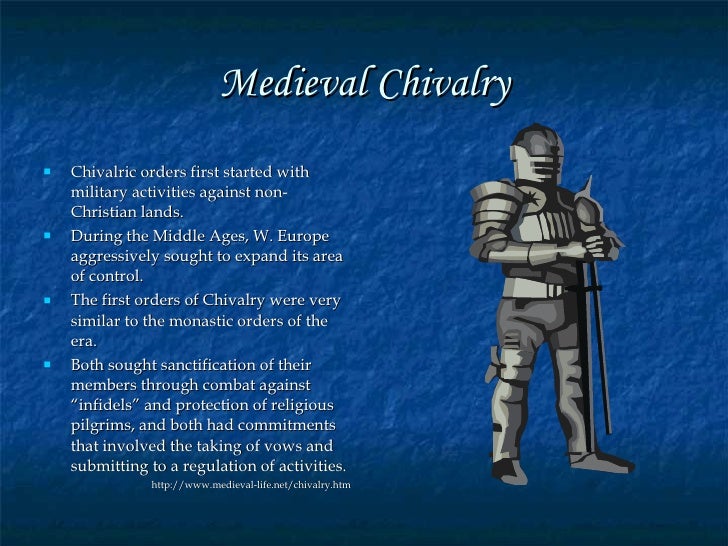
Chivalry Define

Chivalry Define Rating: 3,5/5 8569 votes

Chivalry is polite, kind, and unselfish behavior, especially by men toward women. Marie seemed to revel in his old-fashioned chivalry. Uncountable noun In the Middle Ages, chivalry was the set of rules and way of behaving which knights were expected to follow.the age of chivalry. Arcanists definition.
In the 21st century, the word chivalry evokes a kind of old-fashioned male respect for women. But during the, the code was established for much grittier reasons.At a time of routine military violence with massive civilian casualties, chivalry was an effort to set ground rules for knightly behavior. While these rules sometimes dictated generous treatment of the less-fortunate and less-powerful, they were focused mainly on protecting the interests of elites.The development of chivalry went hand-in-hand with the rise of knights—heavily armored, mounted warriors from elite backgrounds—starting around the time of the Norman conquest of England in 1066. The world chivalry itself comes from the Medieval Latin caballarius, meaning horseman. In the middle of the 11th century, the knight was not a particularly honorable figure.“He’s a hired thug,” says Jennifer Goodman Wollock, a professor of medieval studies at Texas A&M University who has written two books about chivalry. “He’s got horses.
He’s got armor. He’s like a heavy tank.”READ MORE: Knights Were Heavily Armed and Prone to ViolenceThese warriors were commanded by warlords and rewarded with land, or with license to plunder the villages where they did battle, looting, raping and burning as they went.“In the early Middle Ages, church councils were praying to be delivered from knights,” Wollock says.
“What develops as you get into the late 11th, 12th century is a sense that knights have to have a professional code if they’re going to be respected and respectable.”. A maiden leads a knight in a suit of armor to a castle.Florilegius/SSPL/Getty Images The Chivalrous Knight Appears in Romantic FictionStill, Wollock argues that chivalry did go well beyond the simple need for a disciplined military. Particularly in romantic literature of the time—some of it written expressly for young noblemen who were being trained for knighthood. Knights were presented as pious, generous and merciful.“To be a great knight, you ought to have consideration of civilians, for women,” Wollock says. “The greatest knights are inspired by the love of some lady out there and want to impress her and win her love by doing great deeds.”READ MORE:Of course, it’s hard to know how much of an impression these stories—generally written not by knights themselves but by clergymen or poets—made on young warriors. Richard Kaeuper, a historian at the university of Rochester and author of several books on medieval chivalry, argues that, while knights generally considered themselves honorable and pious, they didn’t necessarily follow religious leaders’ rules.
Die hard nakatomi plaza meme gif. Edward III, watercolour, 15th century; in the British Library (Cotton MS. By permission of the British LibraryThe concept of in the sense of “honourable and courteous conduct expected of a knight” was perhaps at its height in the 12th and 13th centuries and was strengthened by the, which led to the founding of the earliest orders of chivalry, the and the, both originally devoted to the service of pilgrims to the Holy Land. In the 14th and 15th centuries the ideals of chivalry came to be associated increasingly with aristocratic display and public ceremony rather than service in the field.